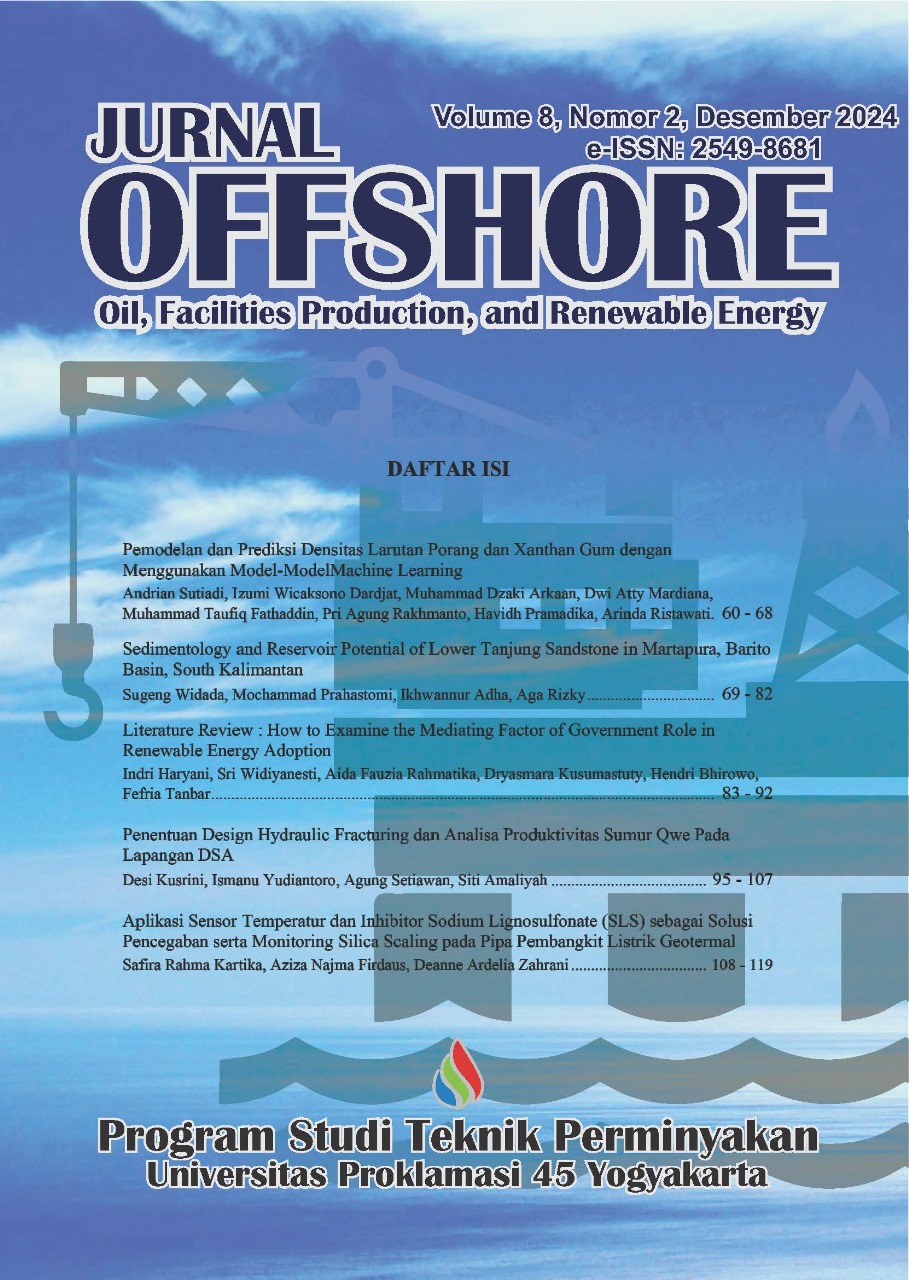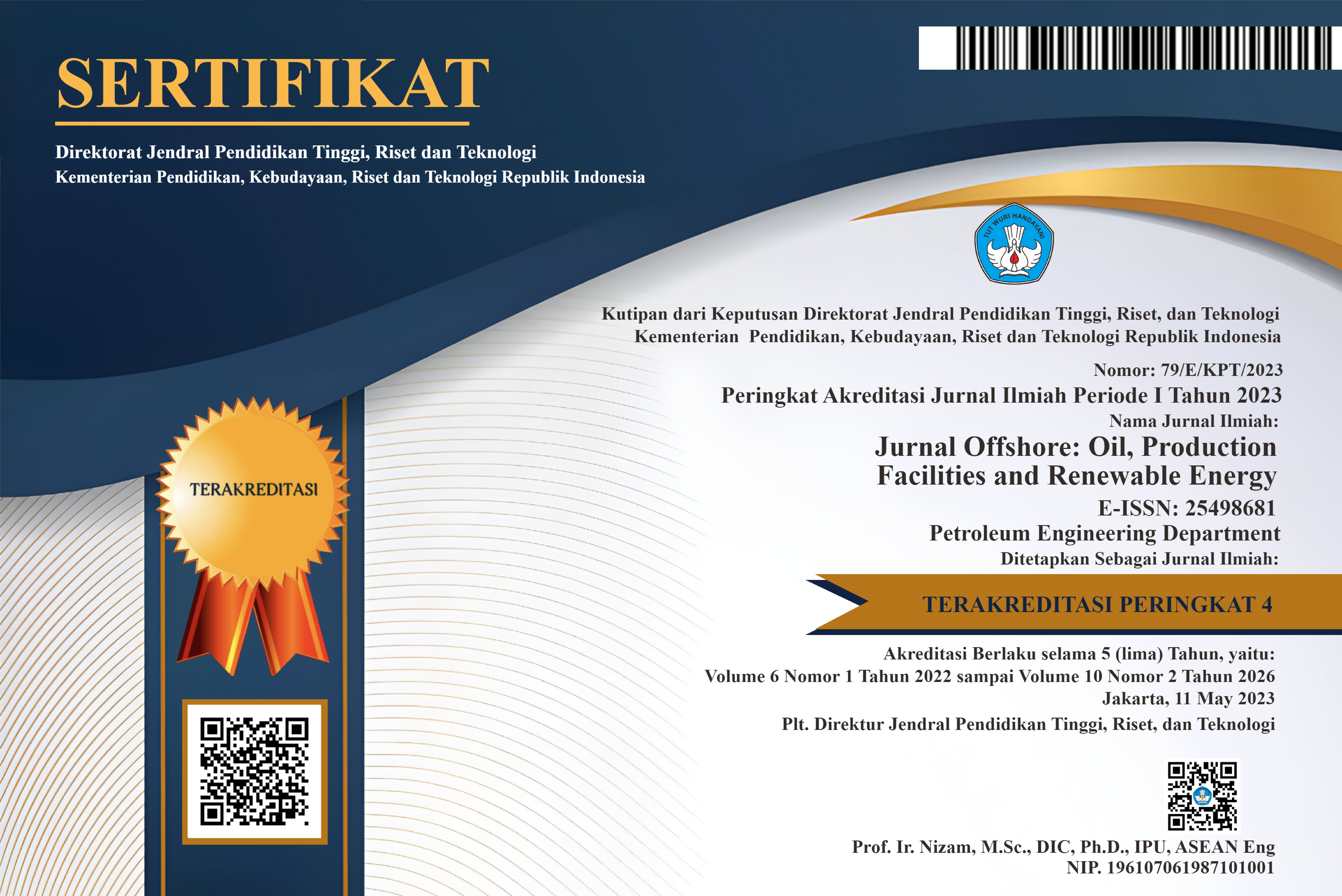Aplikasi Sensor Temperatur dan Inhibitor Sodium Lignosulfonate (SLS) sebagai Solusi Pencegahan serta Monitoring Silica Scaling pada Pipa Pembangkit Listrik Geotermal
DOI:
https://doi.org/10.30588/jo.v8i2.2155Abstract
One of the problems encountered in geothermal exploitation activities is Silica Scaling Rate (SSR). Addressing SSR remains a significant problem, especially during production in geothermal fields with high Silica Saturation Index (SSI). High SSI can lead to silica deposition in pipes. Silica deposition occurs due to temperature drops, pressure decreases, and pH increases. As the temperature drops, the SSR increases, disrupting the fluid flow process from the reservoir. To address this issue, a system was designed to monitor the pipe's condition and trigger SLS injection if the temperature parameter value dropped. SLS functioned by binding silica particles in the fluid, preventing silica from adhering to the pipe walls. This process was carried out by adding SLS chemicals to the fluid flow through the pipes. SLS materials had the ability to bind silica and effectively prevent scale formation. Based on analysis and calculations, a temperature drop was directly proportional to an increase in SSI. A reference temperature of 95°C was used as an indicator for SLS injection because SSI > 1 at this temperature. A dose of 50 ppm SLS was shown to effectively reduce SSI up to 50%, preventing silica scaling in geothermal pipes. This study demonstrates the effectiveness of SLS as a mitigation strategy for silica scaling, offering a cost-efficient and less disruptive solution compared to conventional pipe cutting methods.
Downloads
Published
How to Cite
Issue
Section
License
Copyright (c) 2025 Safira Rahma Kartika, Azkia Najma Firdaus, Deanne Ardelia Zahrani

This work is licensed under a Creative Commons Attribution 4.0 International License.
Authors retain copyright and grant the Jurnal Offshore right of first publication with the work simultaneously licensed under a Creative Commons Attribution 4.0 International License that allows others to share (copy and redistribute the material in any medium or format) and adapt (remix, transform, and build upon the material) the work for any purpose, even commercially with an acknowledgement of the work's authorship and initial publication in Jurnal Offshore. Authors are able to enter into separate, additional contractual arrangements for the non-exclusive distribution of the journal's published version of the work (e.g., post it to an institutional repository or publish it in a book), with an acknowledgement of its initial publication in Jurnal Offshore. Authors are permitted and encouraged to post their work online (e.g., in institutional repositories or on their website) prior to and during the submission process, as it can lead to productive exchanges, as well as earlier and greater citation of published work (See The Effect of Open Access).
















